
views
Folding an Origami Super Boomerang Airplane
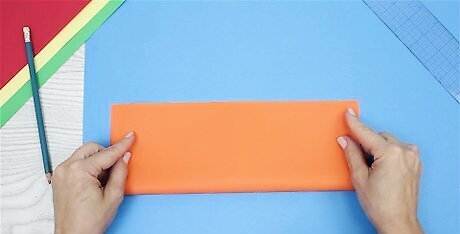
Fold an ordinary sheet of printer paper in half lengthwise. Normal sized pieces of printer paper are generally 8.5 by 11 inches (21.59 by 27.94 cm), which is the recommended size paper for an origami super boomerang airplane. And if the option is available to you, choose 20 or 24-pound weight paper to make a sturdier craft. Crease your fold firmly. The “weight” of your paper does not describe the actual heaviness of a sheet, but the sturdiness and thickness of it. Higher weight paper is sturdier, and will withstand air-forces better when you launch the boomerang in real life. 20 and 24 lb paper is most frequently used in copy machines and office printers. When working with children, you may want to make use of the term “hot dog” style to help young ones better associate the long-sided orientation of the paper with the fold stretching left-to-right. Generally, folding something “hot dog” style is folding it like you would to make a hot dog – lengthwise down the middle. It is also possible for you to use A4 paper or a 6 - inch square of origami paper to fold your origami super boomerang. However, when one of these irregular shapes of paper, you will have to be especially precise with your folds and may have to make slight modifications.
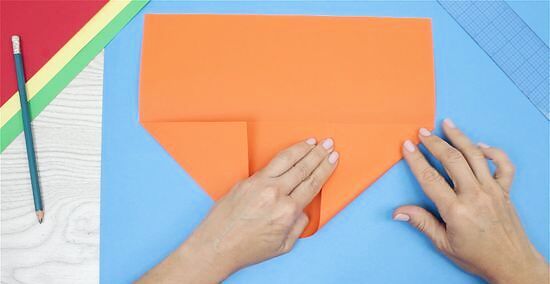
Lay the paper lengthwise and fold the bottom corners. Open your paper and set it on your work space so it is lying lengthwise (horizontally). The crease in the middle of your paper should run left-to-right. Now take the bottom left and the bottom right corners one at a time and fold each inward to the crease. When folding your corners, line up each so the edges both run to evenly alongside the center crease. There should be a 2 - 3 inch gap (5 - 7.6 cm) between your folded corners. You can use a paper folding tool called a bone folder to help you form tighter creases when folding. You could make a bone folder of your own easily. You might use a smooth bottle cap, a paperweight, or even a coin in your pocket to press with while you fold your paper. This will form an especially crisp crease, which will strengthen your finished boomerang airplane.

Fold the flat bottom edge to meet the middle crease twice. The bottom half of your paper should now have both corners folded in and aligned evenly with the middle crease. However, a flap at the bottom should remain. The bottom-most edge of the flap should still run parallel to the middle crease. Fold the bottom edge, which should run parallel to the middle crease, up to meet the crease. Then fold once more so the newly formed bottom edge again bends up to meet the middle crease. Avoid overlapping the crease too much. When your edges overlap, the final fold can become weakened. Neat, well aligned folds will help maintain the structure of your paper airplane. With multiple/layered folds, you should take extra care to reinforce your fold by running your nail or bone folder along your creases. The more layers of paper you have to fold, the more pressure you’ll have to apply to get a sharp crease on each of the layered pages.
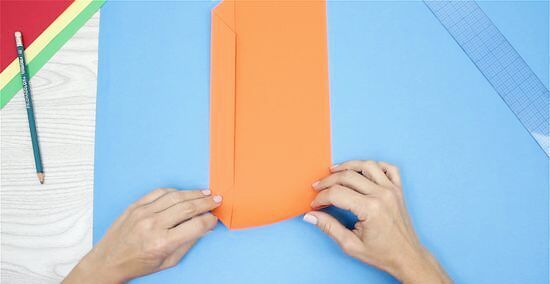
Reorient your paper and fold the bottom edge. Turn your paper so that the folded half is facing the left side. With this new orientation, the bottom edge of your paper should be an even line except for the leftmost side, which should be angled in an upward diagonal. Fold this bottom strip so its diagonal meets the diagonal fold immediately above it. Depending on the crispness of your folds, the weight of your paper, and the size of paper you’ve used, the size of this fold could vary. You will likely need to fold the tab upward at around the 1-inch mark (2.54 cm).
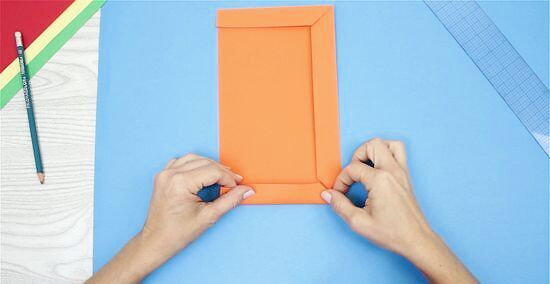
Fold the opposite end tab similarly. Turn your paper so the folded half faces the right side instead of the left. Your folded tab should be at the top of your page, and the edge of the bottom tab should be mostly straight except for an upward diagonal at the far right. Take the bottom tab and bend it upwards so its diagonal runs along the folded diagonal above it. Use crisp, clean folds. This fold, much like the one previous, may increase or decrease in size depending on paper weight, size, and your folding skills. Approximately, you’ll have to fold your bottom tab upward at around the 1-inch mark (2.54 cm).

Reposition your paper and release the folded tabs. Turn the folded half of your paper from its current right side position to face downward again. Then you should unfold the flaps on the left and right that you just folded. You will need to re-fold, reinforce the folds with your nail or bone folder, and re-open the tabs several times to strengthen the fold. Then leave your tabs unfolded. At this time you should go over all your folds with your nail or a bone folder. This will strengthen the creases of your aircraft and help your plane fly best.
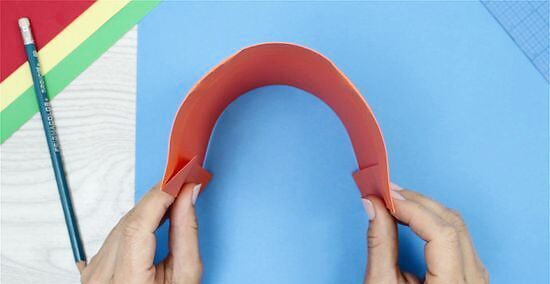
Bend your paper into an arc/semi-circle. You can do this with any substantial hard edge, like the edge of your desk, the edge of a sturdy bookcase, the edge of a clean counter-top, and so on. Then: Take your paper with one long side end in each hand. Be sure you are holding your paper with the folds facing downward toward your edge. Bend the downward facing side of your paper along the edge by winding it tightly along the top of the edge, the side of the edge, and along the bottom of the edge in a back and forth motion. Before performing this maneuver, you should check your edge for irregularities. Chips, cracks, or other deformities in your can catch on your paper and cause it to rip. A quick inspection beforehand can save you the trouble of having to start from the beginning to redo your folds. Apply firm pressure with your hands to improve the bend. Be careful not to apply too much pressure; this can lead to a rip or a tear. You should also keep your movements steady and perpendicular (forming an L-shape to) the counter. This will prevent your paper from catching on the table. Give extra attention to the heavily folded half of your page. You should reinforce the half of your page with many layered folds by running the folds as directly along the hard edge as possible. When finished, your paper should have a curved, semi-circular, bowed shape from running it back and forth along the hard edge. If you lay your paper on a flat surface and it does not curl into a bowed/semi-circular shape, you should run your paper along your hard edge more until it does.
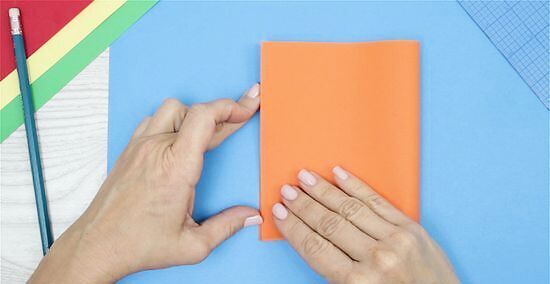
Halve your paper. Position your paper so the folds are face up with the folded half of the page pointing in the downward direction. The outer left and right tabs, which you left unfolded while running your paper along an edge, will need to be folded inward again. This fold will return the diagonal of each tab to meet and run evenly along the diagonal fold above each tab. Once you have refolded your left and right tabs, you should fold the outside edges together so the left and right sides meet evenly. Fold a sharp crease down the middle lengthwise.

Unfold and halve your wings to the center crease. With your paper oriented lengthwise, open the middle fold you’ve just made. Now take the outside left and right edges and fold these to the middle crease. Reinforce your folds here, especially the thick creases that have many layers of paper. You can use either your nail or a bone folder. You might also want apply more pressure to achieve the best crease.
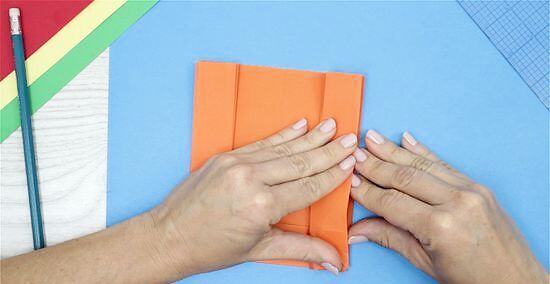
Peel back your flaps to meet the outside edges. You should have two flaps folding inward that meet at the center crease. Take the right flap and peel it back so its inside edge now runs even with the outermost right edge. Do this for both sides to create a small gap in the center. Use your nail or a bone folder to reinforce the thick folds here to strengthen your plane.
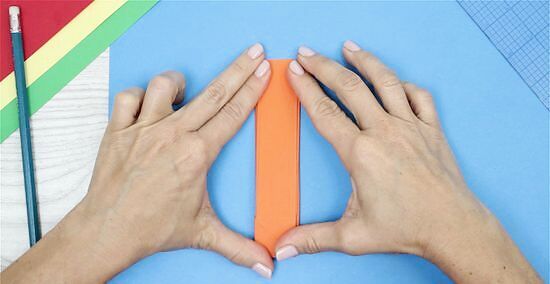
Halve your wings once more. Fold your paper in half lengthwise. Reinforce your folds by running your nail or a bone folder along the creases, particularly the creases with many folds. When you have finished re-creasing, turn your paper so the open, uncreased side is facing in the downward direction (toward you) and: Fold the top flap, which should contain several layers of paper, to meet the top edge. Then turn your paper over and perform the same fold with the opposite flap of your paper. Crease the resulting folds well. Run your nail or bone folder several times along each crease. Due to the thickness of your folds at this point, you may have the best results creating crisp creases with a heavy, flat-edged paperweight.
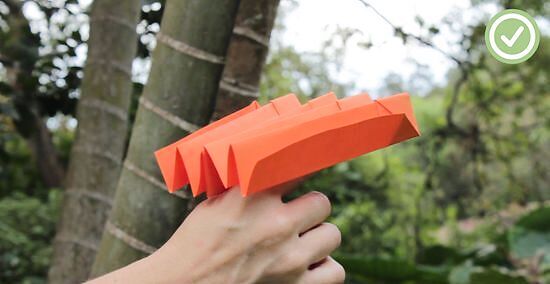
Unfold your airplane and prepare to launch. Your airplane should unfold in a zig-zag/staircase shape. One half of the zig-zag strip will be heavily folded and the other half not folded at all. The folded end is the nose of your plane. Hold the plane by laying your pointer finger in the trough of the very middle of your zig-zags so that the tip of your finger almost reaches the folded part of the nose of your plane. Your other fingers should support the plane from beneath. Launch your plane by throwing outward while curving your hand in the direction you want your boomerang plane to return to you. For example, if you want your boomerang plane to loop around and return to you on the right, you should curve your hand to the right when throwing. If you want the plane to loop around on the left, you should curve to the left while throwing. It may take a considerable amount of practice before you get the hang of throwing your boomerang airplane. You might also need to tweak the shape of your plane. For example, if you are trying to get your plane to curve back to you on the right, you might add a small rightward bend to the back right tail of your plane. This will create more drag on the side, making it cut more in that direction. By tweaking the tail end of your plane you can further improve its turning or flight. Usually, these tweaks will involve putting small bends or creases in the tail of your plane. By bending the tail up or down, you create different kinds of drag, or wind resistance. Drag forces will influence how your plane flies.
Modifying a Squirrel Airplane
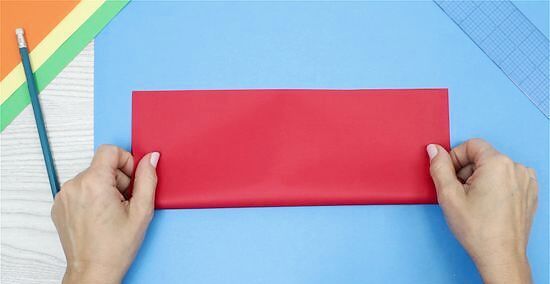
Fold your paper in half lengthwise. The ideal piece of paper for folding your squirrel airplane will be size A4. You should be able to buy this from your local arts and craft store or stationery store. Fold it in half lengthwise so that it resembles a hot dog bun. If you have difficulty finding A4 paper, you should use paper roughly A4 dimensions which are 8.27 × 11.69 inches (210 × 297 millimeters). North America convention uses the name “Letter” to refer to a page that is of similar dimensions to A4 sheets. If working with children on this project, you may want to help visualize this fold by explaining it as “hot dog style.” Much like you’d prepare a hot dog left-to-right (horizontally), you’ll fold your paper in half lengthwise hot dog style. You should consider using a smooth, solid object to help your press firmly against the folds you make. This object is usually called a “bone folder” in paper crafting. You might use a smooth bottle cap, a paperweight, or a coin to press against your folds while folding to make cleaner, crisper folds.
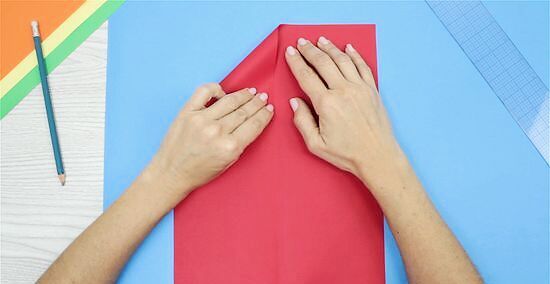
Reposition the page and fold down the top corners. Lay your page before you so the crease of your fold faces you and the flaps face away. Take the top left corner and fold it down so that the edge that runs between the upper and lower left corner runs along the crease. Then: Perform this same fold on the other half of your paper so that both same-side corners fold inward evenly along the crease. This will cause the left side of your paper to slope down to the bottom-left corner in a point. This is the classic paper airplane shape, with a V-shaped nose and simple rectangular body. You should run your nail or some other solid object along your folds at this point to strengthen the creases of your squirrel airplane.
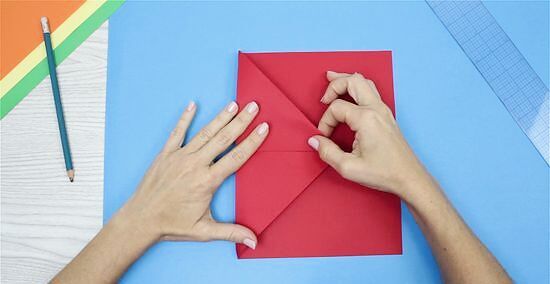
Fold the nose of the plane inward. First you'll need to open the lengthwise middle fold and lay your paper flat on the table. The left corners of your plane should still be folded, creating an arrow shape pointing to the left. The triangular point of this arrow is the nose of your craft. Take your nose by its tip and fold it inward until the base of the nose becomes the new outside edge. As your folds thicken, it will become more and more difficult for you to achieve deep, crisp folds. Deep and crisp folds will make a stronger and more precise airplane. Use a bone folder or press creases firmly with your nail to strengthen your folds. Your nose should fold inward so the outermost perimeter of your paper forms an evenly shaped rectangle. The center of your paper should be creased left to right, and the triangle you folded inward should be pointing inward to the right.

Fold the corners of the nose of your craft. The nose of your craft should have an upper and lower corner. Fold both corners inward to run along the center crease flatly. Precise folds that don’t overlap will create the strongest and most accurate airplane. After folding your corners, the resulting shape should create an even base, the resulting flaps forming two halves of a triangle. Once you have finished this fold, your paper should again be shaped like an arrow pointing to the left. Run over your folds with your nail or a bone folder to strengthen them, and pay special attention to folds with many layers.

Fold the tip of the triangle and re-crease the middle. Hold the tip of your left pointing arrow and fold it inwards. Fold the tip so that it’s tip is even with its base. After you make this fold, the nose will be shaped with two small triangles pointing left and one small triangle pointing right. Now your craft is ready to be re-creased. Pick up your sheet and bend it along the middle lengthwise crease. Use your nail or a bone folder to strengthen this fold.
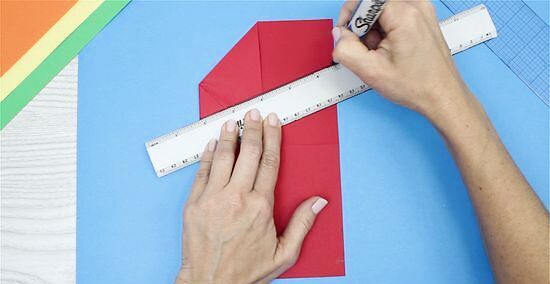
Create the wings. Use a ruler and a marker to draw guidelines for your next folds. You’ll want a 1-inch (2.6 cm) mark along both sides of the nose of your craft and a 1½-inch (3.8 cm) marks on both sides of the tail. Then draw a line from the marks on the nose to the marks on the tail to create your guidelines for both sides. Fold your wings from the outside of each flap and bend both downward until the creases of your wings follow your guidelines perfectly. Your wings, once folded, should face outward to either side flatly. The middle crease will point down and create a V-shape. Getting your wings to maintain this position might require you to repeat the folds several times to strengthen them. You might also use a tool, like a bone folder. Both Wings should mirror each other in shape and size. One should not be longer than the other. If your wings don’t look like mirror-images, you should unfold your wings, re-measure your guidelines, and check your folds. Correct and refold any errors you find. If you’re a novice paper crafter, you might have mis-folded a few steps. This might result in some of your creases being weak. Weak folds can hurt the performance of your finished paper airplane, so you might want to start afresh if you’ve had some mis-folds.
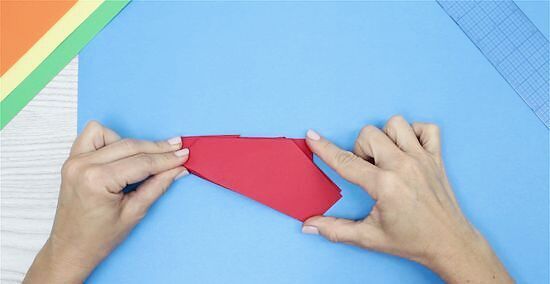
Shape your wings and turn over your plane. You’ll likely have to adjust your wings with slight bendings and tweaks from your hand to get the wing position right. Looking at your plane head on, open the wings so that they form a flat L-shape at the top of both sides of the V-shaped crease that forms the body of your plane. When you have finished shaping your wings, pinch the body so both sides of the middle crease are pressed together. Then flip the plane so that the top of the wings are flat on your table.

Create fins. Take your ruler and use your marker to draw a point .62 inches (1.6 cm) from both nose-side corners of the wing to the inside. On the tail corners of both wings, measure and draw a point ½-inch (1.2 cm) to the inside. Use your ruler to connect these two points to form the guideline for your fin fold. Take extra care to be precise with your fin measurements. These will have a significant effect on the drag forces on your plane and will greatly impact your modified squirrel paper airplane’s ability to boomerang.

Tweak your tail to fly a boomerang pattern. Small modifications you make to the tail of your paper airplane will have a significant effect on its steering. To boomerang to the left, you’ll need to tweak your tail to steer to the left. Look at your plane from its tail. See how the very back is mostly flat? You’ll want to: Slightly bend (tweak) the back edge of the right wing to point upwards. Divide the left wing’s back edge into a right and left half. Bend the right half of the left wing slightly up. Bend the left half of the left wing slightly down Bend the left side fin slightly to the left as well. You will likely have to make adjustments to your tail after you test fly your craft. The balance of your plane, irregular folds, small tears, the position of the bends in your tail – all these can influence your plane’s ability to boomerang. Have patience and tweak the shape of your plane until it boomerangs to the left back into your arms

Throw your plane. But first, pick it up and hold it by the bottom of the V-shaped crease in the middle. Allow your thumb and forefinger to pinch the nose so the sides of the V press together. Then, in a smooth motion that curves to the left, throw your plane and release with your thumb and forefinger. Note the areas your plane needs improved. If it turns to hard to the left, your leftward tweaks on your tail should be smaller. If it doesn't turn left enough, you should add a deepen your leftward tweaks.
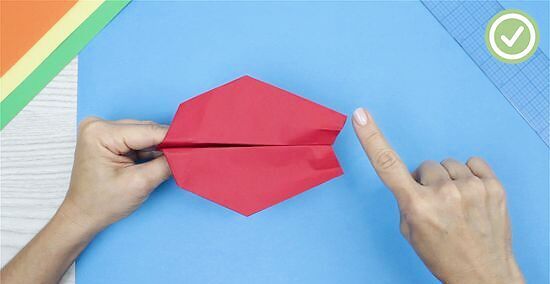
Troubleshoot looping and rapid crashes. The common problem of your plane looping can be solved by adjusting the upward and downward tweaks you made on your rudders. Make your tweaks subtler. If you have the problem of your plane rapidly crashing to the ground, flatten out downward tweaks you made on the left rudder and, on the same rudder, make your upward tweak less subtle. You may need to adjust your throwing motion. Experiment with your throwing angle and how hard you throw the plane.










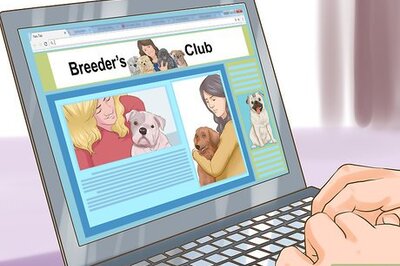

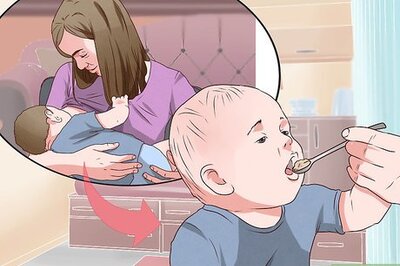
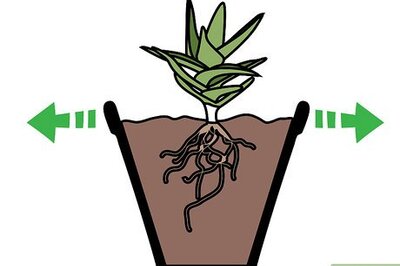

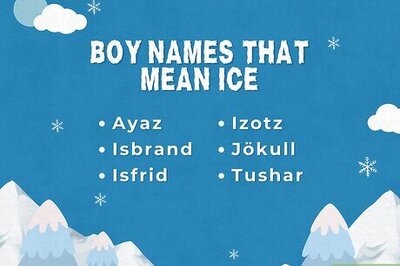


Comments
0 comment